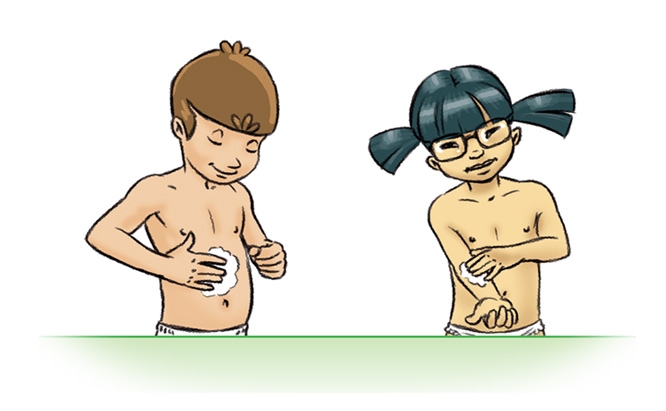Νέα από το χώρο της Ατοπικής Δερματίτιδας

Treatment of Staphylococcus aureus colonization in atopic dermatitis decreases disease severity.
Huang JT1, Abrams M, Tlougan B, Rademaker A, Paller AS.
Author information
Abstract
OBJECTIVES:
The goals were to determine the prevalence of community-acquired methicillin-resistant Staphylococcus aureus colonization in patients with atopic dermatitis and to determine whether suppression of S aureus growth with sodium hypochlorite (bleach) baths and intranasal mupirocin treatment improves eczema severity.
METHODS:
A randomized, investigator-blinded, placebo-controlled study was conducted with 31 patients, 6 months to 17 years of age, with moderate to severe atopic dermatitis and clinical signs of secondary bacterial infections. All patients received orally administered cephalexin for 14 days and were assigned randomly to receive intranasal mupirocin ointment treatment and sodium hypochlorite (bleach) baths (treatment arm) or intranasal petrolatum ointment treatment and plain water baths (placebo arm) for 3 months. The primary outcome measure was the Eczema Area and Severity Index score.
RESULTS:
The prevalence of community-acquired methicillin-resistant S aureus in our study (7.4% of our S aureus-positive skin cultures and 4% of our S aureus-positive nasal cultures) was much lower than that in the general population with cultures at Children’s Memorial Hospital (75%-85%). Patients in the group that received both the dilute bleach baths and intranasal mupirocin treatment showed significantly greater mean reductions from baseline in Eczema Area and Severity Index scores, compared with the placebo group, at the 1-month and 3-month visits. The mean Eczema Area and Severity Index scores for the head and neck did not decrease for patients in the treatment group, whereas scores for other body sites (submerged in the dilute bleach baths) decreased at 1 and 3 months, in comparison with placebo-treated patients.
CONCLUSIONS:
Chronic use of dilute bleach baths with intermittent intranasal application of mupirocin ointment decreased the clinical severity of atopic dermatitis in patients with clinical signs of secondary bacterial infections. Patients with atopic dermatitis do not seem to have increased susceptibility to infection or colonization with resistant strains of S aureus.


